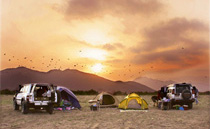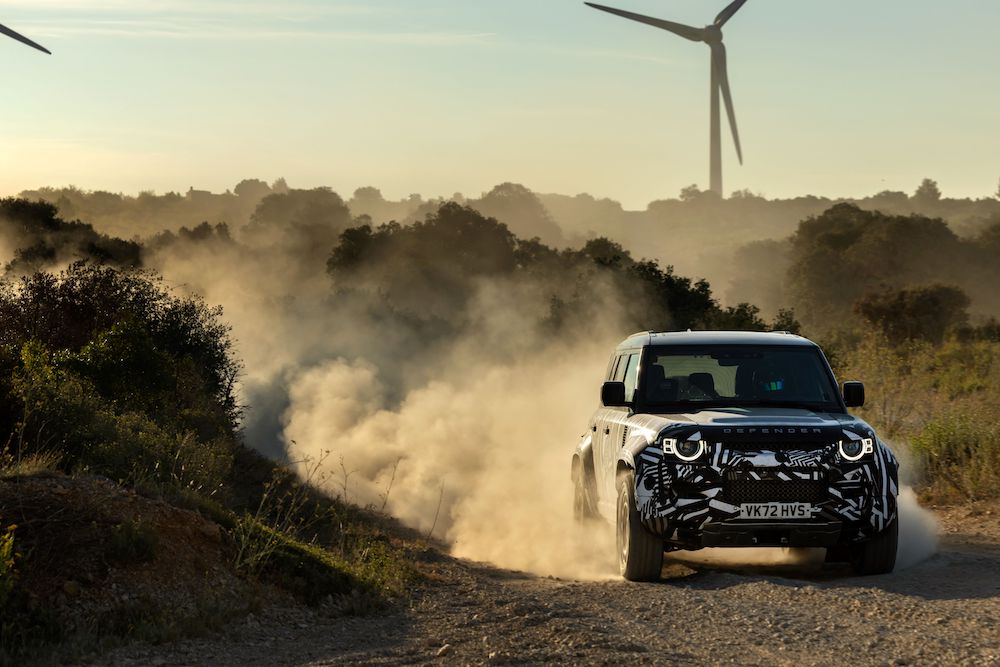Text and photographs: Iselle McCalman
The narrow passage carves its way through the Hajar mountains in the Emirate of Fujeira – the oldest mountains in the region dating back 70 million years, and in some places rising to over 3000 metres. Its ruggedness is stark, yet beautiful. Travellers are struck by the overwhelming feeling of remoteness despite the fact that the coastal resorts are in some places less than 50km away. Even the GPS loses signal in some areas…
Mention the UAE in conversation with Westerners and it conjures up images of sand, more sand, and then Dubai. This is true, but it tells only half the story. Off-road exploring of the UAE and Oman explains the other half.
The country boasts extraordinary scenery which includes sand, sea and mountains. Along these routes are sabkka (salt flats), the famous “fjords of Arabia”, clear water pools, ancient date farms and many more. The country boasts an archaeological history dating back to 5000BC.
The Hajar mountain range separates the west of the UAE with the coastal plains in the east, creating very different and diverse ecosystems. The west is mostly desert, with the major cities like Abu Dhabi and Dubai dotting the coastline. Six of the seven Emirates are along this coast. The Emirate of Fujairah in the eastern UAE, which borders the Gulf of Oman, is known for its supreme diving spots and spectacular scenery. Throughout the country the borders of the Emirates mix with those of Oman, causing great confusion for novices to the area. Towns like Al Ain and Dibba are split between the two countries with some border control. In the desert you never really know which country you are in – which is the way it has been for hundreds of years.
Time stands still in the coastal towns on the east coast. It stretches from Khor Kalba on the south eastern border past the cities of Fujairah, Khor Fakkan and the town of Dibba. Here one can see traditional fishing villages with fishermen sorting the early morning catch and locals sitting at street cafés, smoking their shisha pipes and watching the world go by.
Then of course there are the traditional oasis settlements, some very high up in the mountains, complete with camels and date plantati ons dati ng (that wasn’t us! Ed.) back hundreds of years. In some areas desert nomads can still be found. They are usually very curious about the “caravan of cars” driving through their remote villages. Very far removed from the glitz and glamour of the western UAE cities.
4×4 routes in the country are well developed, mapped and graded. However, for the intrepid explorer there are the unmapped roads, which after a good desert or rain storm might not be roads anymore. But be warned: Travelling in the desert is inherently dangerous, and should never be done alone. Part of the fun is to join a registered off -road club, which is managed by experts who know the country and the conditi ons, can provide basic training to novices and of course know the best spots!
For visitors it’s easy to rent a 4×4 on an international driver’s licence. Most clubs provide trips for “desert beginners” or “exploring trips” which can be done with an unmodified vehicle. However, one of the nati onal pastimes here is the modification of cars for desert driving, and the cost of modifications can easily exceed the cost of the vehicle. So for the more adventurous, the clubs offer “intermediate” and “advanced” desert trips. These are not for the faint-hearted. I attempted the intermediate level with a standard Jeep Cherokee 3.7 automatic, and survived, but with damage to the front bumper, which was ripped off over a dune crest. Ideally the suspension should be lifted a little and wider “sand” tyres used.
Exploring the UAE is best done from October to April. The remaining five months are too hot and humid for any normal being to be active outdoors. Nevertheless, in December, night camping in the desert can be very cold. Camping is free and can be done just about anywhere as there are no fixed or designated camp sites. The country is very safe and, apart from petty theft occasionally, you will not have personal safety issues.
One of the most popular routes is to Liwa, in the Emirate of Abu Dhabi. It borders Saudi and the Empty Quarter (Rub al Khali) and is the world’s largest dune desert. The accessible areas provide supreme desert driving and stunning views. Then along the mountains are various wadis – dry water pans in river beds – which in the rain season can cause flash floods. Some, like the Hatt a Pools, hold water year-round and make for a wonderful sight after a day in the desert. But when dry, which is for the best part of the year, wadis provide fun driving and great challenges.
Even if you travel to a different location in the UAE every weekend for six months, you still would not have seen it all. Add Oman to the itinerary and you will be occupied for a long time. Oman is a world on its own with even more to see and do. Why not try something different and join us in exploring the wonderful world of old Arabia.
Abu Dhabi 4×4 club
The Abu Dhabi 4×4 club’s first trip was on 19 May 2006 with five members in total! Nowadays, with over 1000 members, many trips per weekend are arranged and have become so popular that the number of vehicles is restricted.
The club is registered with the Abu Dhabi authorities and encourages the safe use of off-road vehicles in different terrain. Trips vary from novice to advanced, with driver training for those getting started. All types of 4×4 vehicles are welcomed. You are assured of great fun and a wide mix of other vehicles in the club – from purpose built competition cars, to family vehicles.
The club is totally family-orientated, with wives, children, relatives – and even dogs – joining in, depending on the nature of the trip. Visitors are always welcome.
The regular social activities include day trips, night-drives, early-birds, as well as weekend camping trips. Every trip is rated so that you will know what to expect. These trips are led by experienced drivers who can advise you on safe driving techniques and lend a hand in the event that you need assistance. You will learn proper recovery methods in the event of a mishap, such as getting stuck in the sand.
Potential new members are required to join one of the weekly trips to ensure that you’ll be comfortable with the procedures before hitting the sand. Even if you don’t intend on doing serious “dune-bashing”, any exploring trip may include some sand. Special arrangements can be made for visitors.
To stay connected with the growing community online and to access the amazing pictures taken during the trips, it is recommended to register online and join the online chat forums at www.ad4x4.com.
Living in the UAE
Iselle works as the outstation property manager for an airline, and gets paid to travel the world. She tells us what it’s like being based in the UAE, 4x4ing aside!
“Living in Abu Dhabi has its pros and cons. Yes, petrol is ridiculously cheap – around R3 a litre – but all fuel is more expensive in Dubai and other Emirates because Abu Dhabi supplies the country. Only trucks run on diesel and there are no diesel cars available here. Cars are equally cheap. My new 3,7-litre Cherokee retails for about R220 000.
“This is also the place where people are prepared to pay $6m for a special number plate such as AD9! The locals just love their cars. I often hear of kids as young as 14 getting a Ferrari for a birthday present. The world’s most expensive cars can all be found here. On the downside, the UAE has just received the dubious award of the most dangerous country to drive in!
“On a more mundane level, one can find the best malls, hotels, clubs, pubs, bars and spas in the cities. But these are all very expensive and aimed at Euros and Pounds. The first time I paid the standard R60 for a beer at a pub I nearly choked, but salaries here are much higher than in SA, so you get used to it quite soon. But food, in general, is of exceptional quality. Fresh produce is imported from over the world and it is labelled by country on the shelves. It still fascinates me that I can select my next meal from a dozen different countries.
“The average summer temperature is 40 – 50 degrees (it sometimes gets hotter than 50) but the humidity of up to 100% is the real killer. In mid-summer this combination causes the sand to be suspended in the air, so there is no fresh air to breath. For outdoor lovers this is real punishment.
“I have also had some amazing experiences and met wonderful people, preferring not to stick just to expat groups. I enjoy exploring the country and learning about the different cultures found here.
“But I do miss the bushveld and the wild animals. We recently flew, by ourselves, from Johannesburg to Stellenbosch, around the Wild Coast to Margate and back. I was again impressed with the beauty of the South African countryside. I have travelled extensively in SA and will always recommend people visit the country at least once!”









